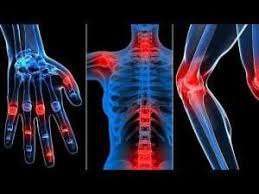
Most Americans will experience back pain in their lifetime. Some research has estimated that 80% of Americans suffer from back pain that comes from various conditions. Back pain becomes more common as patients age. One common source of back pain is known as facet hypertrophy.
Facet hypertrophy is a state where there are degenerative and arthritic changes to the facet joints in the spinal cord. The vertebra in your spinal cord has two
facet joints, one on each side, to facilitate motion, weight bearing, and flexibility in the spinal cord. Simply put, you can think of facet joints as the knuckles of the spinal cord. These small joints have cartilage lining and are lined with a synovial membrane.
Facet joints are prone to wear and tear as patients age. Everyday life can affect face joint structure and change how the face joints impact the rest of the body and surrounding tissues, nerves, and other bones in the spinal cord. Certain paint groups are more vulnerable to this condition many times simply due to genetic disposition.
The medical community has not been able to develop comprehensive medical treatments to treat these damaged facet joints. Stem cell therapy could be an effective treatment method for patients who are suffering from facet hypertrophy.
What is Facet Hypertrophy?
In many instances hypertrophy is an ideal outcome for patients. Hypertrophy is a term that is used to describe the enlargement of the part of the body that increases in size. This term is often used in exercise to describe the increase and growth of muscle cells. The medical community often encourages this form of hypertrophy, as growing muscle size can lead to improved health outcomes.
However, when hypertrophy occurs in the spinal cord it is not ideal for long-term patient outcomes. When hypertrophy occurs in the facet joint, the joint becomes swollen or enlarged. Facet hypertrophy can occur due to inflammation in the spinal cord from trauma, disease, or long-term wear and tear.
The joints can enlarge to a point where the joints are putting pressure on the surrounding tissues, bones, and nerves in the pain. This inflammatory state can lead to long-term complications for patients. Some of the common symptoms of a hypertrophied facet joint are similar to other back-related conditions. Patients suffer from stiffness, discomfort, decreased mobility, back pain, and more.
If left untreated, facet hypertrophy could cause other serious spinal cord disease, such as spinal stenosis and radiculopathy. There are multiple treatment methods that patients may be able to utilize. Facet joint injections can help reduce patient pain. Surgical intervention is another treatment method for patients who are struggling with facet hypertrophy. However, these medical treatments are not always effective in treating facet hypertrophy.
Stem Cell Therapy for Facet Hypertrophy
Stem cell therapy has interested medical researchers for decades now. This treatment method has a number of benefits that can help patients who are suffering from facet hypertrophy. Stem cells have powerful anti-inflammatory and regenerative capabilities. Researchers do not fully understand how stem cells accomplish this, but are hopeful that these capabilities can help treat conditions where conventional medicine has failed.
Stem cells could be used to treat the spinal discs that have degenerated. Regenerating the spinal discs could help reverse some of the hypertrophy. The load could be taken off of the facet joints, which could reduce the enlargement of the facet joints. Stem cell therapy could also be used to reduce hypertrophy.
There is medical evidence that stem cells have helped reduce hypertrophy in other parts of the body. One recent study looked at several studies, which investigated if mesenchymal stem cells could help treat hypertrophic and keloid scars. Hypertrophic scars is an abnormal response to wound healing where the skin raises and causes skin deformation. The study looked at 10 studies that investigated hypertrophic scars and one study that investigated keloid scars.
The reviewed studies all found that stem cell therapy improved patient outcomes. In eight studies, the hypertrophy of the scars was reduced. Stem cells were able to improve the raised skin and there were no adverse effects from the treatment. The researchers advocate for more research into how stem cell therapy can help with hypertrophy.
This study showcases how stem cell therapy can reduce hypertrophy through its complex mechanisms. The hope is that if stem cells were able to improve hypertrophy on scars, then stem cells could be used to reduce problematic hypertrophy in other parts of the body. Patients who are suffering from facet hypertrophy may be able to utilize stem cell therapy to reduce the unnatural growth of their facet joints.
The BioXcellerator team works with patients who are suffering from a number of back-related conditions. We develop customized treatment plans that aim to address the root cause of the facet hypertrophy. BioXcellerator is dedicated to improving the quality of life of patients that we work with.

